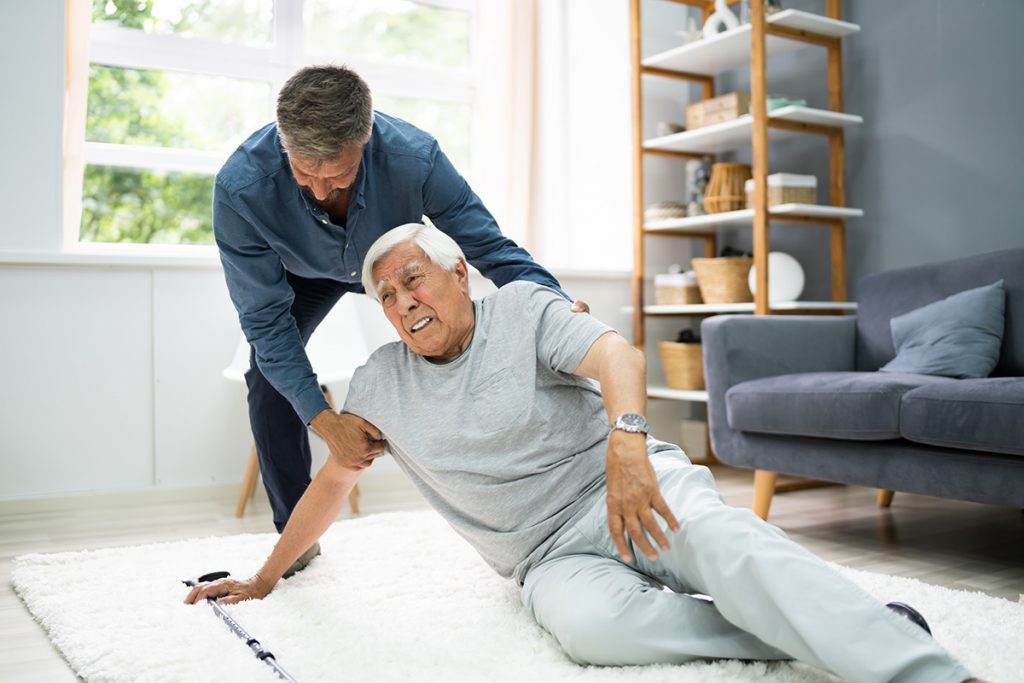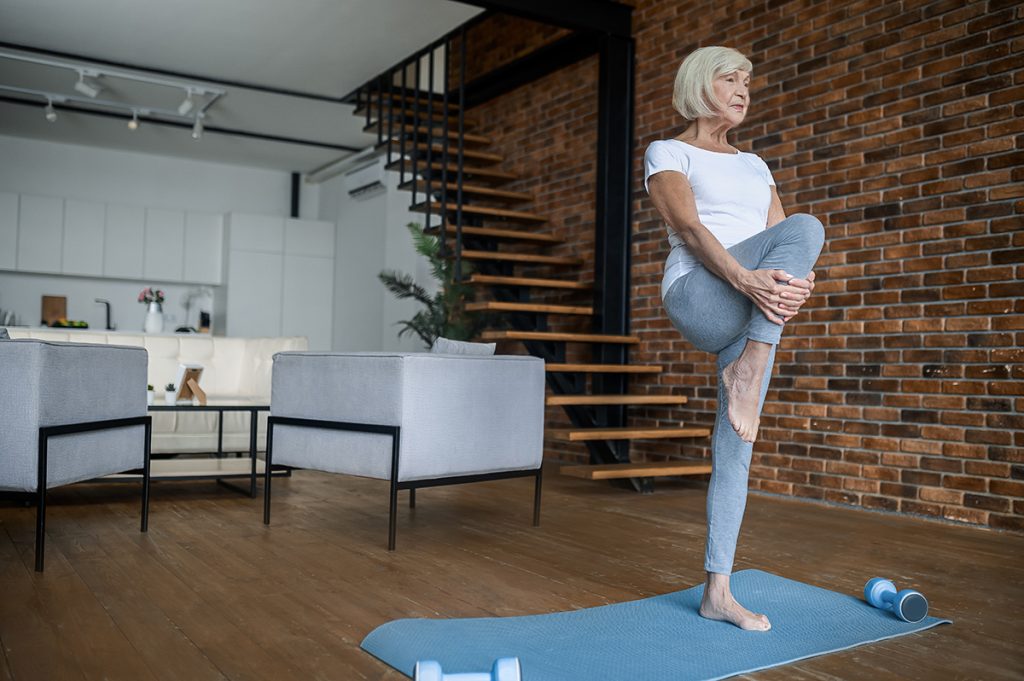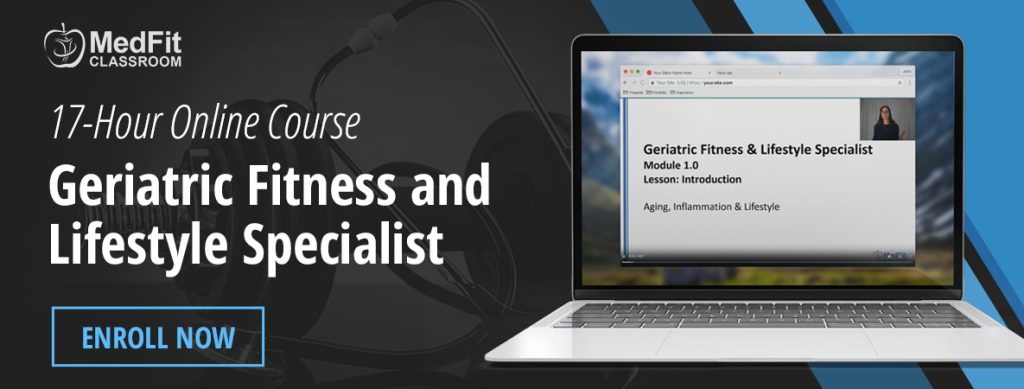Falls can happen in an instant. They are one of the top fears for older adults. The statistics are frightening. Between the years 2000-2016 the rate of mortality from falls for those over age 75 more than doubled.(1)
Weakness when standing, insecure balance, and falling are leading cause of fatal and non-fatal injuries for older Americans.(2) Standing and walking balance is taken for granted for a large portion of our lives. When adults start talking about balance, it is usually when they begin to notice their balance declining. By then, they may have already reduced activity, and may have even resigned themselves to being forever unbalanced and at a risk of a fall. Most older adults know that if they fall and become injured, the outcome could have dire circumstances. Who wants to live like that?

With all the negative information out there, no wonder there is so much fear around loss of balance and falling. National surveys show that only 1 in 3 people get advice on physical fitness or exercise from their medical doctor. Racial, ethnic minorities and the elderly get this advice even less. Most advice surrounding exercise given by doctors has historically been centered around cardiovascular health and aerobic exercise. “Get out and walk!” they are told. Not always is this a practical solution for those who are unsteady and feel fearful being out of the home at risk of a fall. The risk outweighs the reward.
Physicians and physical therapists need more resources and avenues for senior adults to access when they need to improve their balance and reduce their fall risk. Evidence-based fall prevention programs are fortunately on the rise in retirement communities, senior centers, and general recreation and fitness facilities. These programs are valuable but do not begin to serve the needs of the expanding geriatric demographic. More qualified fitness professionals as well as more accessible and affordable programs are needed to help serve this growing need to keep our aging seniors upright and steady on their feet! Fall resistance and resilience training will change these statistics.
It is safe and realistic to say that there are 2 categories of older human beings in relation to balance: the “fallen” and the “not-yet fallen”
Often a trainer will acquire a client that has already fallen and is fearful. The client must first work to overcome this intense fear and the hesitancy of movement that this fear creates. The importance of using E3 (Educate, encourage, and empower) cannot be underestimated here. It is important that geriatric fitness trainers have a deep understanding of the basic principles surrounding the science of balance as well as training methods that are best for reducing fall risk for both categories. Getting the “already fallen” to rise up and move with confidence again will require systematic and progressive programming combined with patient and compassionate instruction.
Fall Resiliency for the “Already Fallen”
Each year millions of older adults suffer falls. Many of these result in serious physical injuries that can reduce their mobility and functioning, cause pain and discomfort, and even increase the likelihood of death in the near future. It is not only the physical effects of the fall that you should consider. Once the injuries have healed and general function is restored, they may be experiencing serious emotional consequences in the form of fearfulness which can diminish their quality of life as they age in place. Helping them to handle this type of impact can help them to move forward after their fall and preserve their lifestyle.
A 2012 university study found that loss of mobility might be due, in part, to “balance confidence”, an issue closely related to a fear of falling. The study concluded that among people who have had a fall-related hip fracture, an independent relationship exists between balance confidence and mobility and balance performance – as well as perceived mobility function.
The study tracked 130 adults over the age of 60 who had suffered hip fractures between six weeks and 7.4 years prior to observation. To test balance confidence, researchers used a simple but comprehensive measure called the Activities-specific Balance Confidence Scale (ABC Scale).(4) The ABC scale can be self-administered, and is comprised of a series of questions that gauge an adult’s confidence in various walking scenarios, such as walking up steps or on an icy path. Adults who rated a higher balance confidence tended to do better in balance and mobility tests.
Use these tips to help someone recover from the emotional impact of a fall:
Acknowledge it. An older adult may feel as though their emotional response to their fall is overly dramatic or not a big deal, and cause them to not discuss it, which can worsen the negative impact. Acknowledge that they have gone through something frightening and humbling. Show them that you can offer support and encouragement as they overcome the fear and movement hesitancy the often comes after a fall.
Recognize the risk. Suffering from one fall does increase the chances that your senior will suffer from another fall. Recognizing this risk and acknowledging this fact is important because it both validates the fear they may now have, and it may foster difficult decisions surrounding their safety in the future. Keeping open communication surrounding this serious issue will allow for prudent decisions regarding their living situation.
Encourage them. The emotional impact of falling can range from simple embarrassment to worry and distress about the changes in their physical functioning, which creates the fear that they will fall again. It does not mean that they should just stop engaging in activity which could actually further diminish their quality of life and increase the possibility of another fall. Introducing movement and exercise in incremental steps and stages will rebuild their confidence, but must be done at their pace. Praise all progress.
Imbalance is not entirely a result of muscle weakness. Strengthening muscles alone will not improve balance. Balance will improve when it is practiced in everyday activities and keen body awareness. Imbalance begets inactivity and inactivity accelerates the aging process.

Balance cannot be willed by the mind. We are not born with balance. We learn balance developmentally as we grow from babies to adults. The body learns how to stay erect in the face of gravity and the forces that are put upon it. It retains balance by staying active. Inactivity erodes balance which in turn inhibits people from being active. A vicious cycle that needs intervention and solutions.
Retraining balance and fall resistance requires knowledge of the anatomy and physiology involved in balance. The muscle systems of the body belong to one of two categories. The Phasic muscles are the mobilizing and movement/action muscles. The mind tells these the body to move in a certain way and the joints move from the contracting and elongation of these mostly fast-twitch muscles. The second type are the Postural or balance muscles and are not subject to conscious direction. These are slow-twitch stabilizing muscles and they engage automatically to hold a person erect against gravity’s pull. They do not shorten or lengthen, but supply isometric tension. With underuse, these postural muscles can “forget” how to maintain balance even on steady and level surfaces. Falling and hesitant walking is the sign that a lifetime of balance muscle memory is declining or lost. Without retraining our postural muscles, imbalance will take over. The solution is to re-educate and activate these essential postural/balance muscles in concert with the Phasic (movement/action) muscles (3) Trainers must encourage daily balance practices and educate their clients on how to manage their posture and center of gravity through drills and skills that align with their functional and independence needs.
Fit Pros: Work with Older Clients on Fall Prevention (and MORE!) as a Geriatric Fitness and Lifestyle Specialist
Millions of people over age 65 looking for guidance from fitness professionals who are knowledgeable in exercise, nutrition and lifestyle principles that can help them improve functional mobility, while also preventing and managing chronic conditions to live their highest quality of life. The Geriatric Fitness and Lifestyle Specialist online certificate course will give you insights, strategies and tools to be a successful professional in this rapidly growing market. Learn how to be a valued part of clients’ continuum of care, working with the medical team to improve functional outcomes and positively impact people’s lives.

Holly H. Benson, BS, is a veteran in the Recreation and Fitness industries with over 35 years of administrative and technical experience. She holds two bachelor’s degrees, Corporate & Community Fitness and Recreation Administration, and numerous fitness certifications. She has developed thriving fitness programs for special populations and has passionately focused her career on the much older adult. She currently owns and operates Moving Strong Medical Exercise, LLC in Lakewood, Colorado and provides in-home and virtual fitness training to older adults and persons with chronic medical and orthopedic conditions.
References
